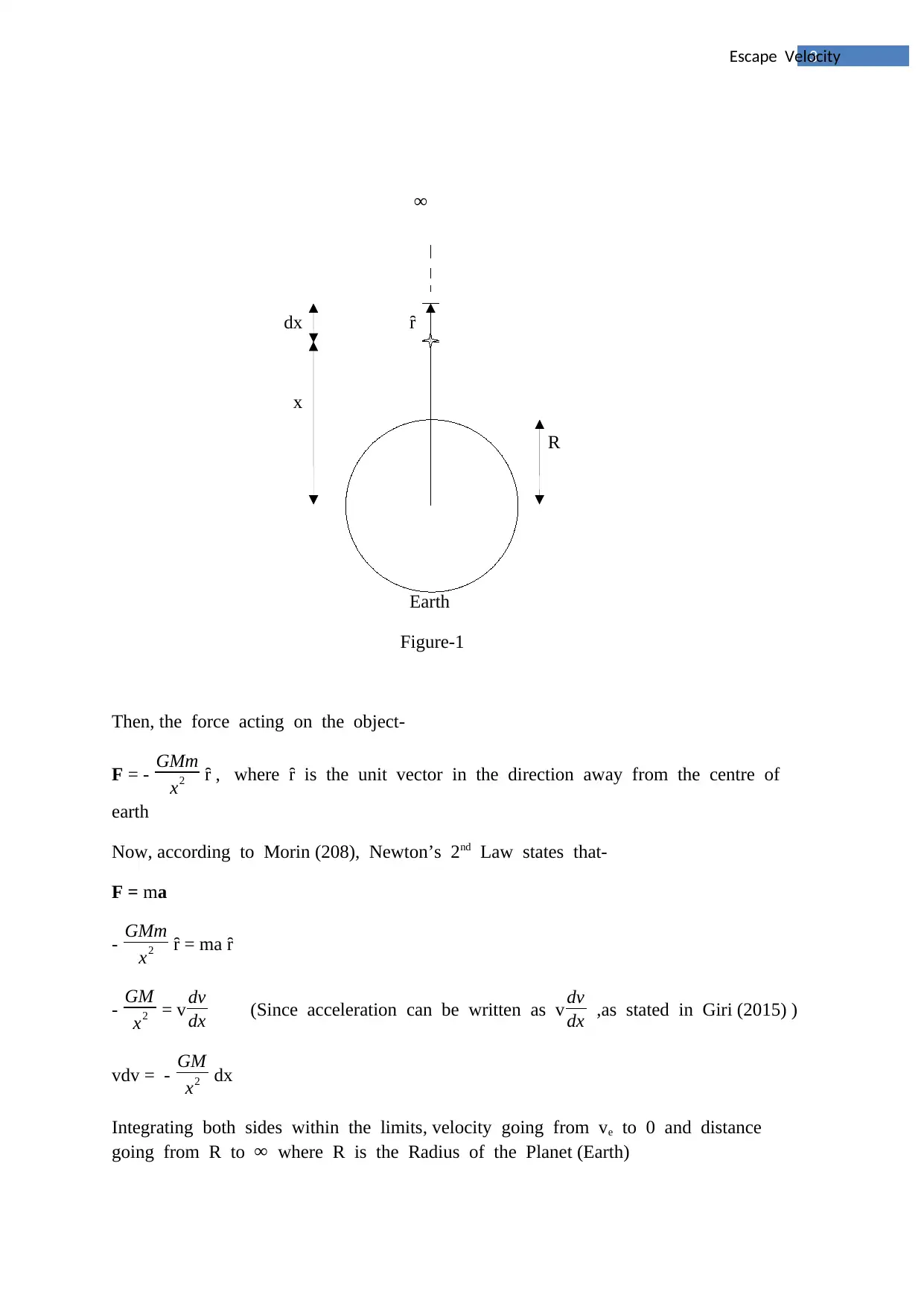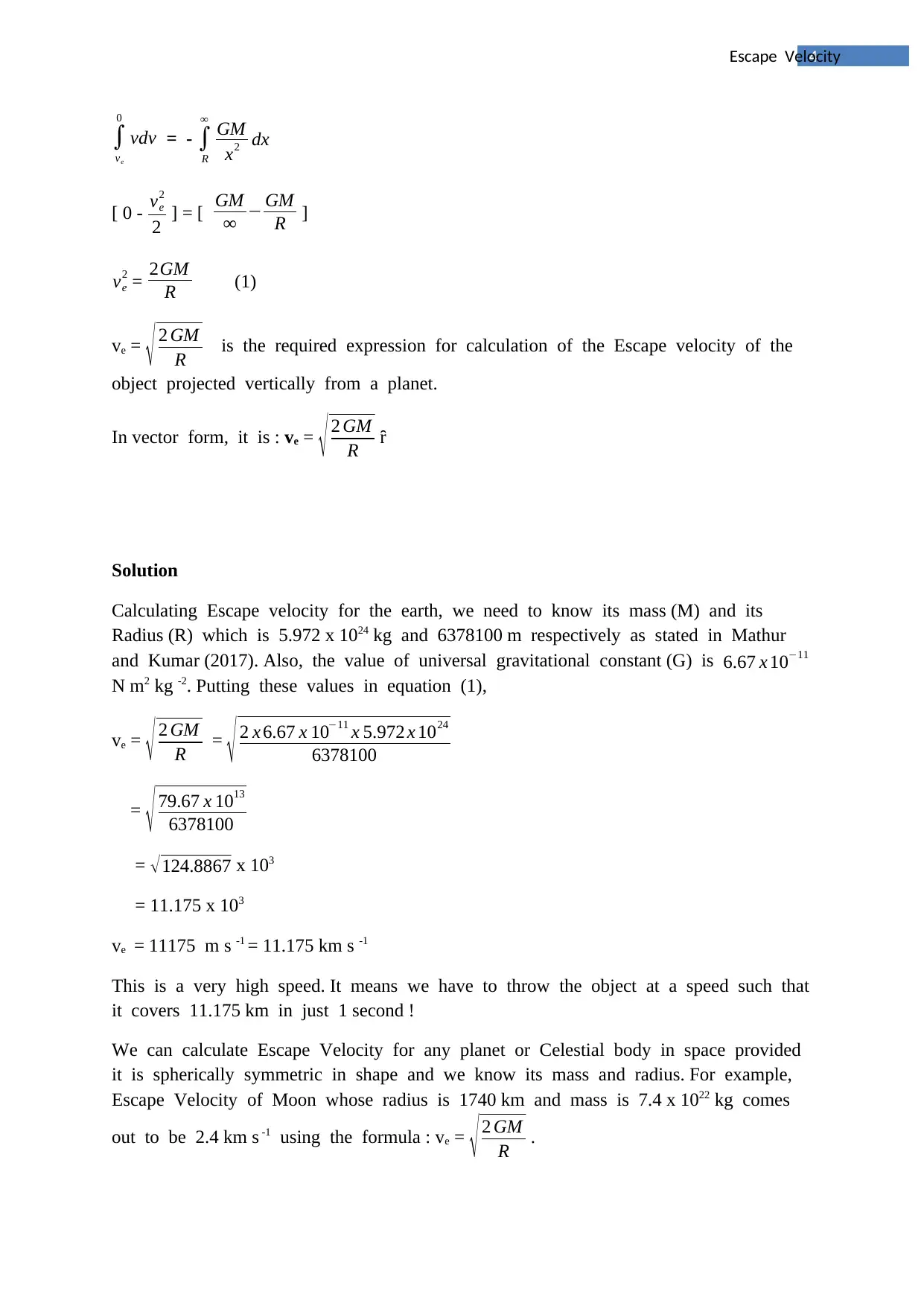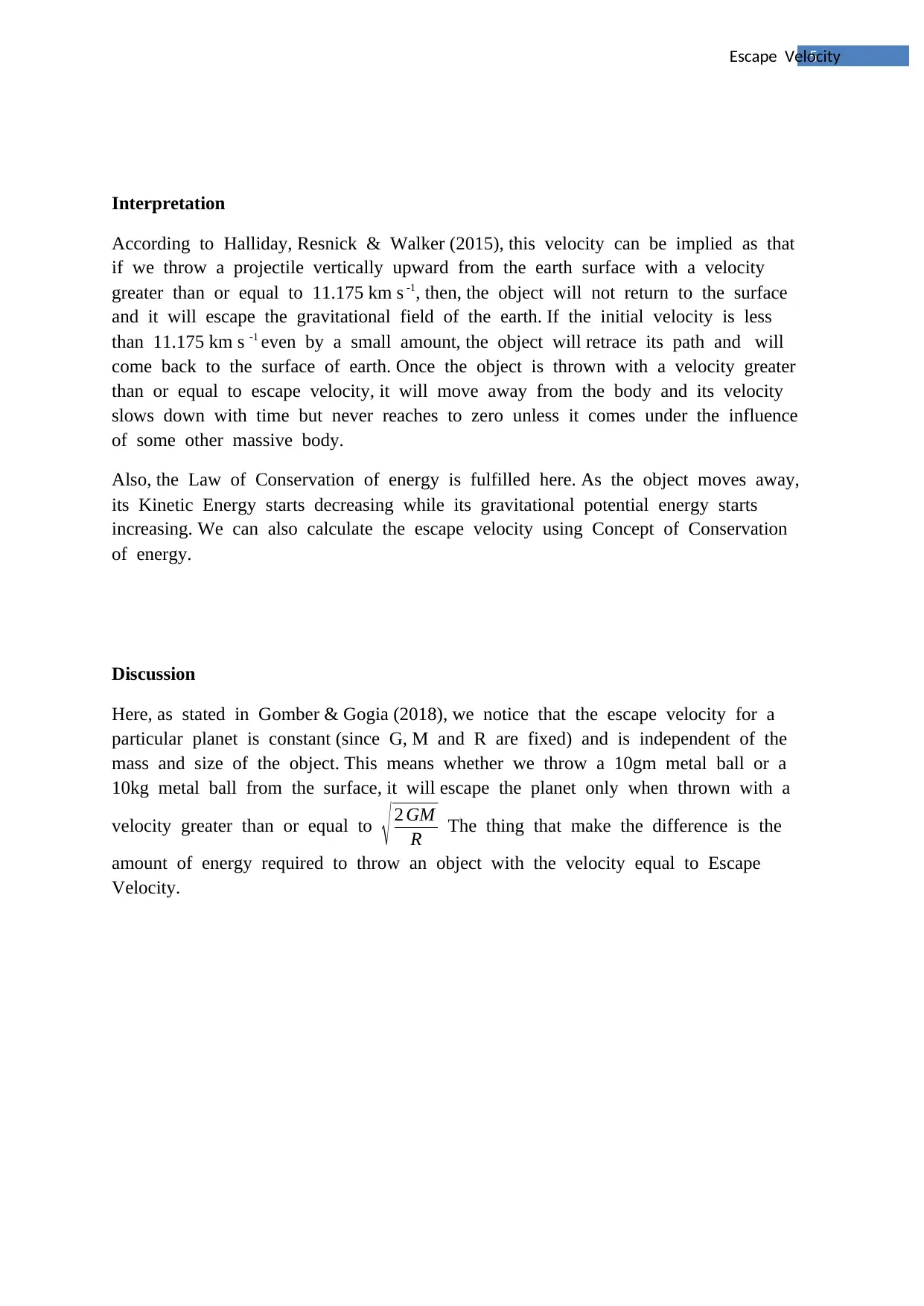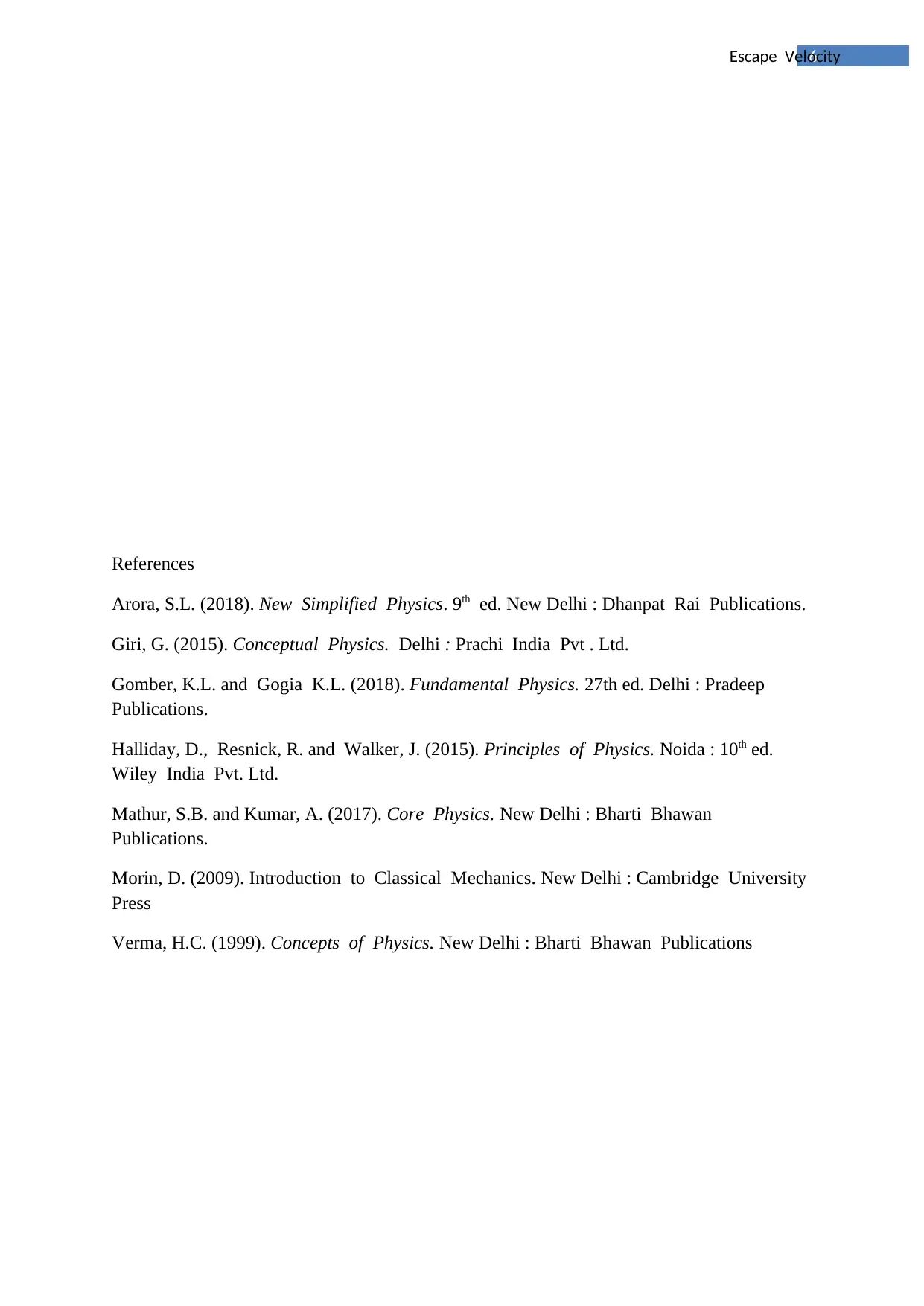ENGR2711: Analysis and Calculation of Escape Velocity from Earth
VerifiedAdded on 2023/04/12
|6
|972
|407
Report
AI Summary
This report provides a detailed analysis and calculation of escape velocity, focusing on the principles of gravitational force and energy conservation. It begins with an introduction to the concept, explaining how a projectile thrown upwards from Earth returns due to gravitational attraction. The report then derives the formula for escape velocity using Newton's Law of Gravitation and calculus, considering the initial kinetic energy required to overcome Earth's gravitational potential. A step-by-step calculation is performed using Earth's mass and radius, resulting in an escape velocity of approximately 11.175 km/s. The interpretation section discusses the implications of this velocity, emphasizing that objects launched at or above this speed will escape Earth's gravitational field. The discussion highlights that escape velocity is independent of the object's mass and size, and the report concludes by referencing relevant physics literature and reiterating the importance of energy conservation in understanding escape velocity.
1 out of 6









![[object Object]](/_next/static/media/star-bottom.7253800d.svg)